Sumba, an Indonesian island located in the eastern part of the Indonesian archipelago, is home to a wide variety of bird species. The island’s rich ecology provides an ideal habitat for these animals to thrive in.
From the charismatic Flores crow to the majestic Sumba hornbill, the island is filled with unique and endangered birds that are found nowhere else in the world. As the island continues to develop and its natural habitats are threatened, understanding the importance of conserving these bird species becomes increasingly important.
In this article, discussing the birds of Sumba can not only help us understand the evolution and distribution of bird species in the region but also help us establish conservation priorities to protect these magnificent birds for generations to come.
1. Cinnamon-Banded Kingfisher
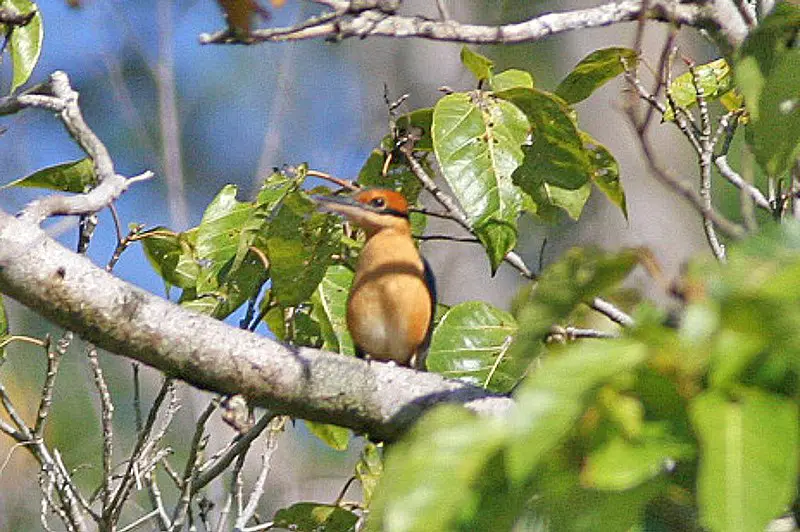
The Cinnamon-banded Kingfisher is a stunning species of bird found in Indonesia and East Timor.
Endemic to the Lesser Sundas, this beautiful creature has an easily recognizable bright cinnamon-colored band across its chest.
It makes its home in subtropical or tropical dry forests but unfortunately these habitats are facing destruction due to human encroachment and development which is putting the future of this species at risk.
The Cinnamon-banded Kingfisher relies on well maintained ecosystems for food, shelter and safety so it’s important that we do what we can to protect them before they become extinct.Scientific classification:
| Kingdom | Animalia |
| Phylum | Chordata |
| Class | Aves |
| Order | Coraciiformes |
| Family | Alcedinidae |
| Subfamily | Halcyoninae |
| Genus | Todiramphus |
| Species | T. australasia |
Also Featured In: Timor-Leste birds, Wetar Island Birds You Need to Know
2. Spotted Kestrel
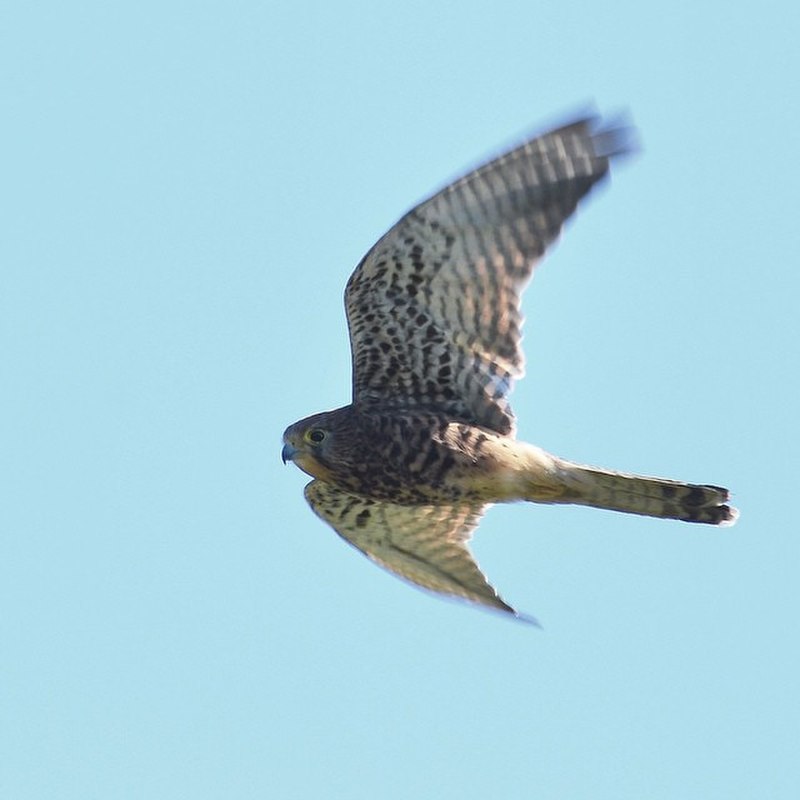
The spotted kestrel, or Moluccan Kestrel, is a species of bird that inhabits grasslands with scattered trees and lightly wooded areas.
It can be found in the Wallacea and Java regions as well as along logging roads where it occasionally penetrates deeper into forests.
They are also known to live within clearings in forested areas. This small raptor has distinctive yellow-brown plumage with black spots on its back and tail feathers which help camouflage them against their surroundings when perched among foliage.
Its diet primarily consists of insects, reptiles such as lizards and rodents like miceScientific classification:
| Kingdom | Animalia |
| Phylum | Chordata |
| Class | Aves |
| Order | Falconiformes |
| Family | Falconidae |
| Genus | Falco |
| Species | F. moluccensis |
Also Featured In: Falcons Species, Common Birds of Lombok
3. Black-Naped Fruit Dove
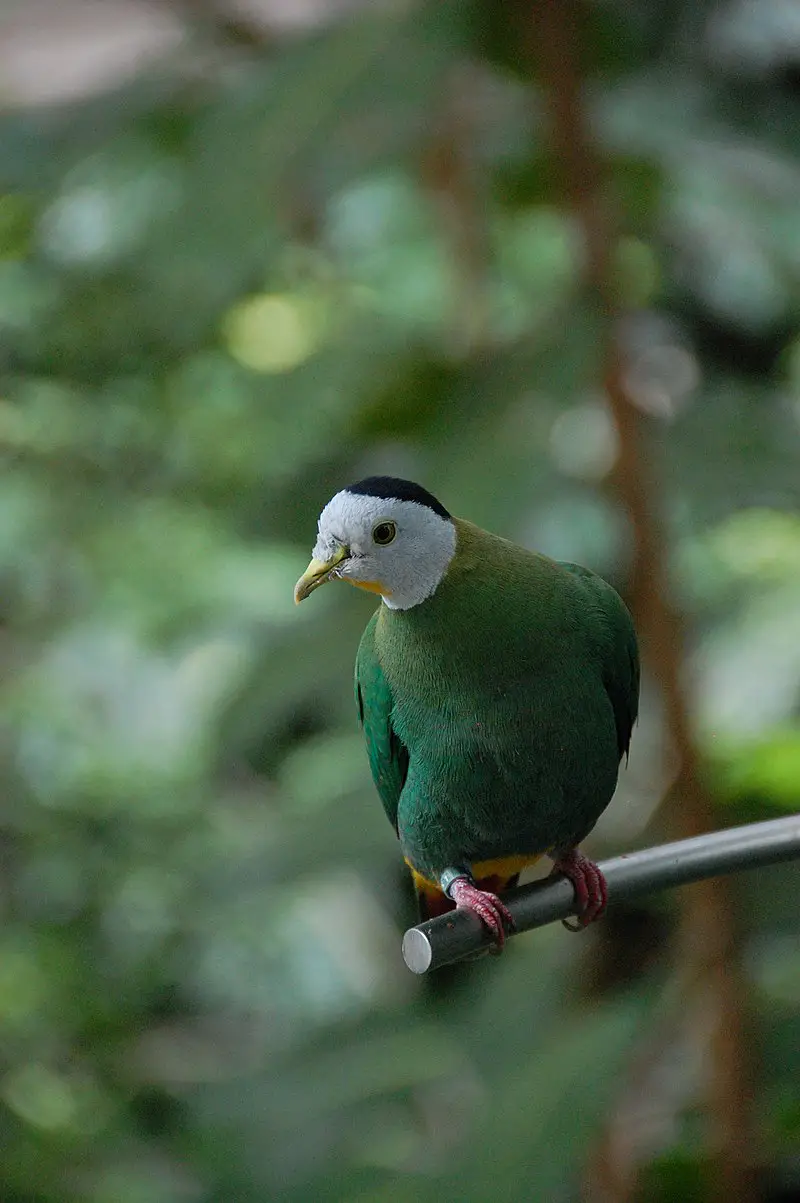
The Black-naped fruit dove, also known as the Black-headed fruit dove, is a medium-sized bird measuring up to 24 cm. It has green plumage, a yellowish bill, and iris.
Male black-naped fruit doves have a pale grey head with a black nape, yellow throat, and golden yellow with pink undertail coverts, while females and young have green plumage.
These birds are distributed across Southeast Asia, from India to Indonesia. Due to their diet, which primarily consists of fruits and berries, they play a crucial role in seed dispersal and regeneration of vegetation in the rainforest.
In their habitat, they are found in forests, plantations, and gardens. These fruit doves have a soft, melodious call and are a delight to behold for birdwatchers and nature lovers alike.Scientific classification:
| Kingdom | Animalia |
| Phylum | Chordata |
| Class | Aves |
| Order | Columbiformes |
| Family | Columbidae |
| Genus | Ptilinopus |
| Species | P. melanospilus |
Also Featured In: Birds that Commonly Found in Bali, Palawan Island Birds
4. Spectacled Monarch
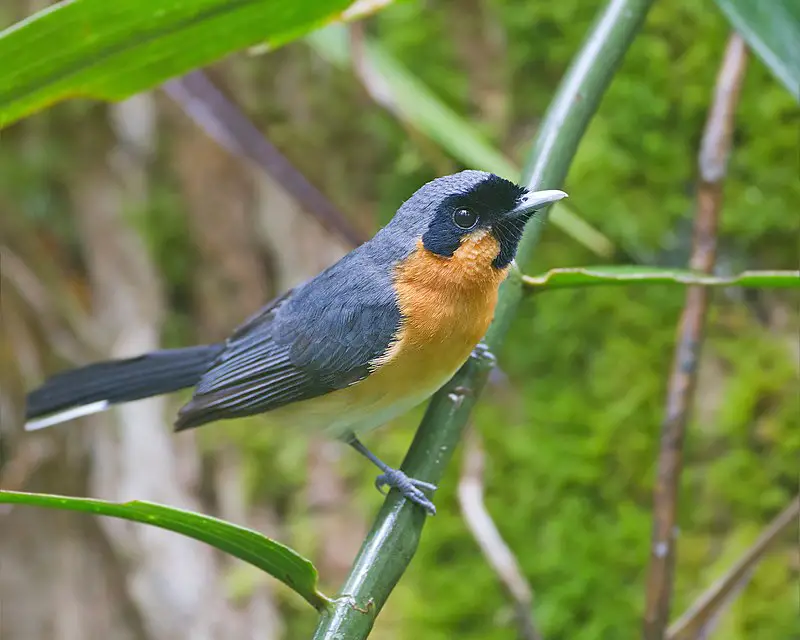
The Spectacled monarch is a bird species belonging to the Monarchidae family. It is native to various regions, including Australia, Indonesia, and Papua New Guinea.
The bird inhabits subtropical or tropical forest environments, including lowland and montane forests, as well as mangrove forests.
The species was initially classified under the Drymophila genus but was eventually moved to Symposiachrus Trivirgatus.
The Spectacled monarch bird is known for its unique appearance, which features a distinctive pattern around its eyes, resembling a pair of spectacles.
Although the species is not under any significant threat, conservation efforts are still necessary to protect its natural habitats and ensure its sustainability.
Overall, the Spectacled monarch is an essential part of the diverse bird species inhabiting the forests of its range.Scientific classification:
| Kingdom | Animalia |
| Phylum | Chordata |
| Class | Aves |
| Order | Passeriformes |
| Family | Monarchidae |
| Genus | Symposiachrus |
| Species | S. trivirgatus |
Also Featured In: Birds that Live in Sunshine Coast,
5. Elegant Pitta
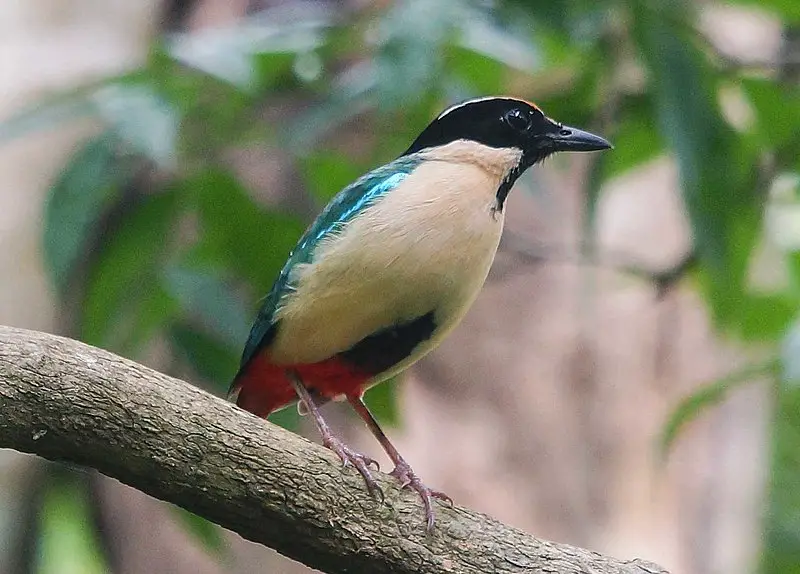
The Elegant Pitta is a beautiful passerine bird belonging to the Pittidae family. This bird is native to Indonesia and is found in the Lesser Sunda Islands and Moluccas.
The Dutch zoologist Coenraad Jacob Temminck first described and illustrated this bird from a specimen collected on Timor Island in 1836.
The species’ scientific name is Pitta elegans, which is fitting as the bird’s appearance is indeed elegant with its brightly colored feathers.
The Elegant Pitta is known for its distinct call and is often found in dense forests and woodland areas
Due to deforestation and habitat loss, the Elegant Pitta is considered a vulnerable species. Conservation efforts are underway to protect these beautiful birds and their habitats.Scientific classification:
| Kingdom | Animalia |
| Phylum | Chordata |
| Class | Aves |
| Order | Passeriformes |
| Family | Pittidae |
| Genus | Pitta |
| Species | P. elegans |
Also Featured In: Common Birds of Indonesia,
6. Mees’s Nightjar
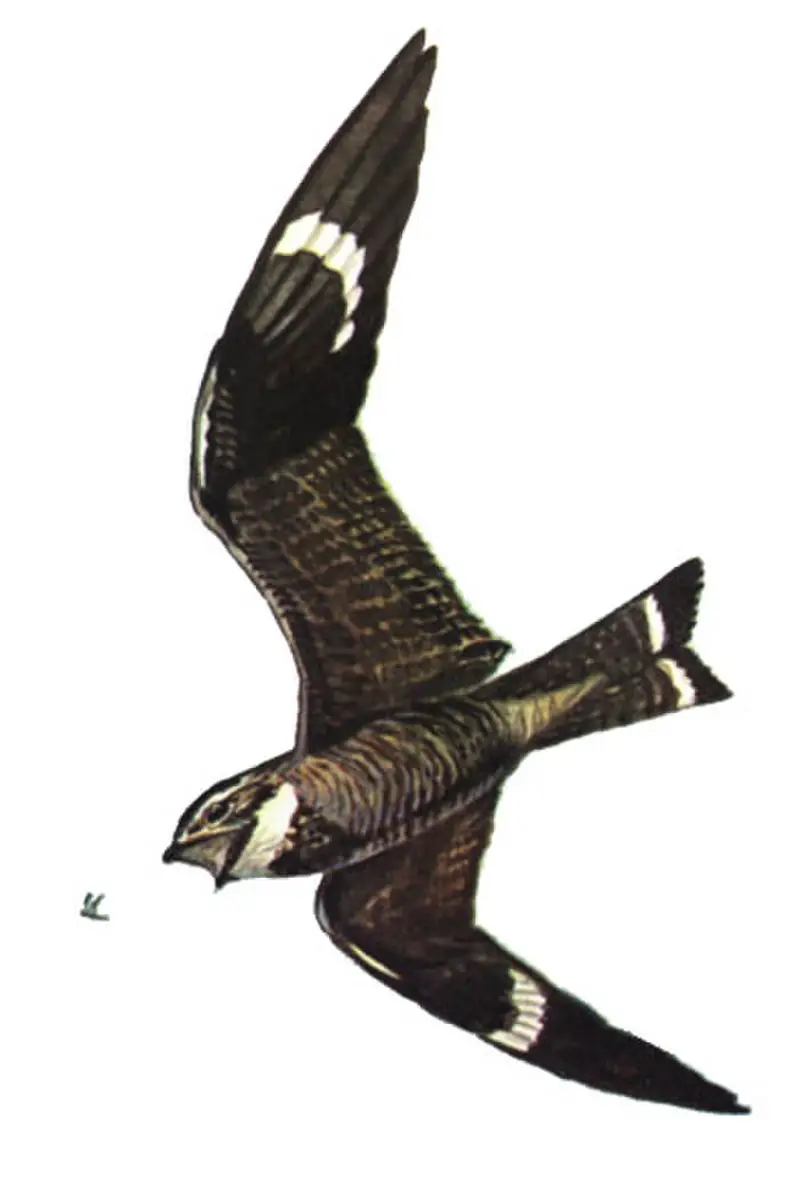
Mees’s nightjar is a unique bird species that was only discovered in 2004. It belongs to the nightjar family and is part of the large-tailed nightjar complex found in the Indonesian islands of Flores and Sumba.
This bird was previously thought to be part of another species due to its physical similarities, but its distinct vocalization prompted its reclassification as a separate taxon.
Mees’s nightjar is named after Gerardus Johannes Mees, a well-known ornithologist who studied birds in Indonesia in the early 1900s.
Despite its recent discovery, not much is known about this elusive nocturnal bird. Further research is needed to understand its behavior and habitat preferences.Scientific classification:
| Kingdom | Animalia |
| Phylum | Chordata |
| Class | Aves |
| Clade | Strisores |
| Order | Caprimulgiformes |
| Family | Caprimulgidae |
| Genus | Caprimulgus |
| Species | C. meesi |
Also Featured In: Birds that Live near Flores Island,
7. Sumba Hornbill
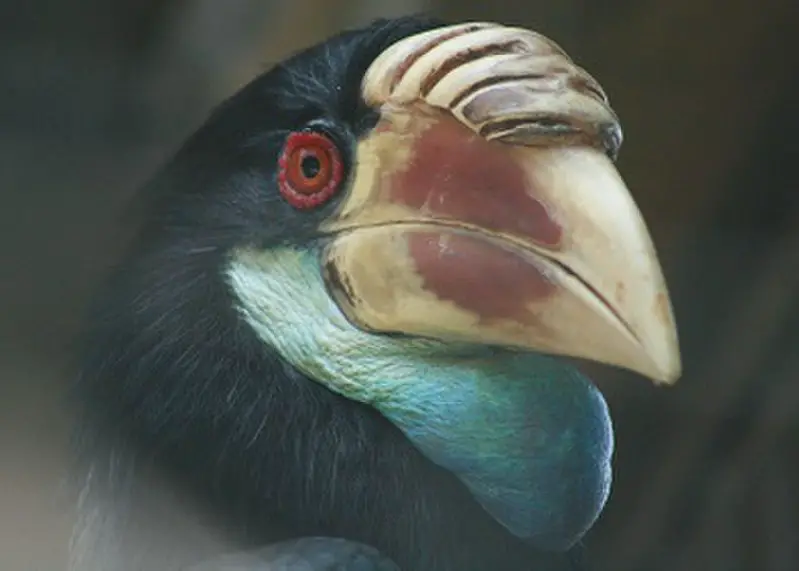
The Sumba hornbill bird is a member of the hornbill family, named after the British colonial administrator and collector Alfred Hart Everett. It measures about 70 cm in length and is black in color.
The male has a reddish-brown crown and nape, while the female has entirely black plumage. This bird is found in the forests of Sumba Island and feeds on fruits and insects.
It is a medium-sized bird and can be distinguished from other hornbills by its coloration.
Sadly, habitat loss due to deforestation threatens the survival of the Sumba hornbill bird.Scientific classification:
| Kingdom | Animalia |
| Phylum | Chordata |
| Class | Aves |
| Order | Bucerotiformes |
| Family | Bucerotidae |
| Genus | Rhyticeros |
| Species | R. everetti |
8. Sumba Buttonquail
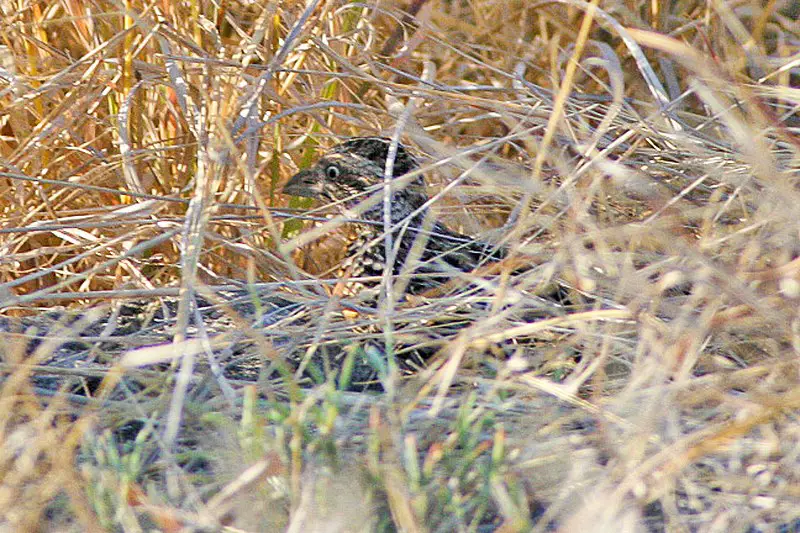
The Sumba buttonquail is a type of bird found only on Sumba Island in Indonesia. It belongs to the family Turnicidae and is named after Alfred Hart Everett, a British colonial administrator and zoological collector.
This small bird inhabits dry savannas, subtropical and tropical shrublands, as well as lowland grasslands. It is a ground-dwelling bird that typically avoids flying, instead preferring to run and hide in the vegetation.
The Sumba buttonquail’s diet mainly consists of seeds and insects found in its natural surroundings. Due to declining populations and habitat loss, this species is considered vulnerable and in need of conservation efforts.Scientific classification:
| Kingdom | Animalia |
| Phylum | Chordata |
| Class | Aves |
| Order | Charadriiformes |
| Family | Turnicidae |
| Genus | Turnix |
| Species | T. everetti |
9. Sumba Green Pigeon
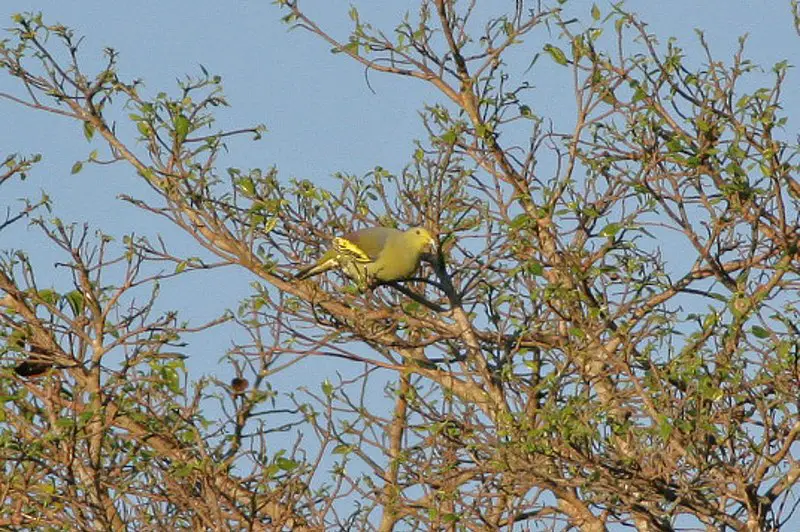
The Sumba green pigeon is a unique bird species belonging to the Columbidae family. This bird is native to Sumba Island, which is situated in Indonesia.
With its natural habitat being subtropical or tropical moist lowland forests, this pigeon species is highly vulnerable to habitat loss. The green-colored plumage of the Sumba green pigeon distinguishes it from other bird species.
It is a small bird that primarily feeds on fruits and seeds. Unfortunately, habitat destruction has led to a decline in the population of this species, making it highly threatened.
If adequate measures are not taken to control habitat degradation and loss, the existence of the Sumba green pigeon could be at risk, further deteriorating the diverse ecosystem that exists in Sumba Island.Scientific classification:
| Kingdom | Animalia |
| Phylum | Chordata |
| Class | Aves |
| Order | Columbiformes |
| Family | Columbidae |
| Genus | Treron |
| Species | T. teysmannii |
10. Sumba Boobook
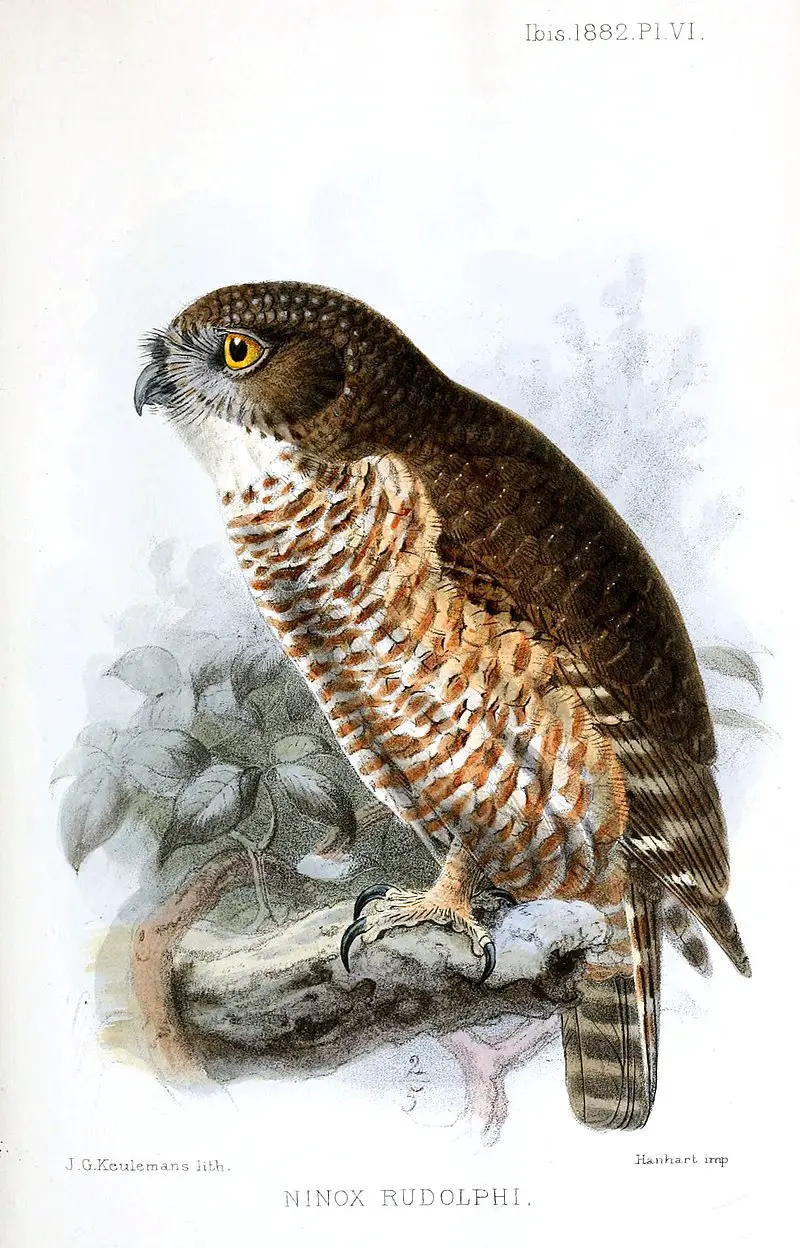
The Sumba boobook bird is a Strigidae owl species that can only be found in the Indonesian island of Sumba. This bird thrives in subtropical or tropical dry forest as well as moist lowland forest.
Unfortunately, the Sumba boobook bird is currently facing habitat loss, which puts this species at great risk.
Despite its predicament, the Sumba boobook bird remains a fascinating creature with its unique features and characteristics that set it apart from other owl species.
It is a beautiful bird that is a testament to the country’s rich and diverse wildlife, demonstrating the need for continued conservation efforts to ensure that it continues to survive and thrive.Scientific classification:
| Kingdom | Animalia |
| Phylum | Chordata |
| Class | Aves |
| Order | Strigiformes |
| Family | Strigidae |
| Genus | Ninox |
| Species | N. rudolfi |
11. Sumba Flycatcher
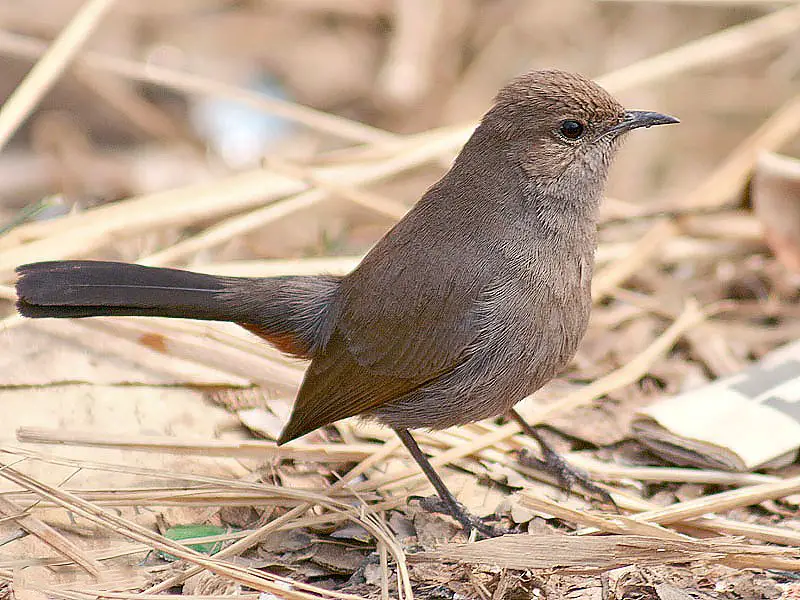
The Sumba flycatcher bird is a member of the Muscicapidae family, found only in Indonesia. They inhabit subtropical to tropical moist lowland forests.
With its unique features, the Sumba flycatcher is a fascinating bird to observe in its natural habitat.
While they may appear small in size, their distinctive appearance sets them apart. The Sumba flycatcher is known for its striking plumage that features a mix of black, white, and orange.
They are also recognized for their exceptional flying ability, allowing them to catch prey on the fly.
These birds are fascinating to observe in flight, and their natural beauty is worth admiring. As a native species of Indonesia, the Sumba flycatcher plays an essential role in the country’s ecosystem and is a delight to birdwatchers around the world.Scientific classification:
| Kingdom | Animalia |
| Phylum | Chordata |
| Class | Aves |
| Order | Passeriformes |
| Family | Muscicapidae |
| Genus | Ficedula |
| Species | F. harterti |
12. Sumba Brown Flycatcher
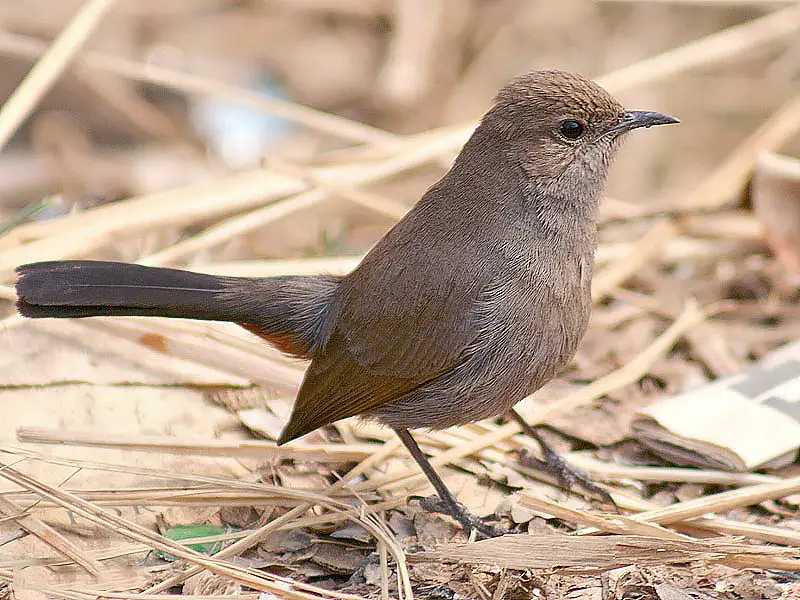
The Sumba brown flycatcher is a bird that can be found only in Indonesia. It belongs to the family Muscicapidae and primarily lives in subtropical or tropical moist lowland forests.
Due to habitat destruction, this species is now facing a severe threat of endangerment. The flycatcher’s unique coloration and exquisite plumage make it a favorite among bird enthusiasts.
Their brown feathers have a subtle elegance that blends well with their environment, making them almost invisible to predators.
Sumba brown flycatchers feed on insects and are active foragers, darting from branch to branch in search of prey.
Observing these shy and elusive creatures is a rare treat for bird watchers. Their dwindling wild population is a cause of concern and in need of conservation efforts to preserve their species.Scientific classification:
| Kingdom | Animalia |
| Phylum | Chordata |
| Class | Aves |
| Order | Passeriformes |
| Family | Muscicapidae |
| Genus | Muscicapa |
| Species | M. segregata |
13. Red-Naped Fruit Dove
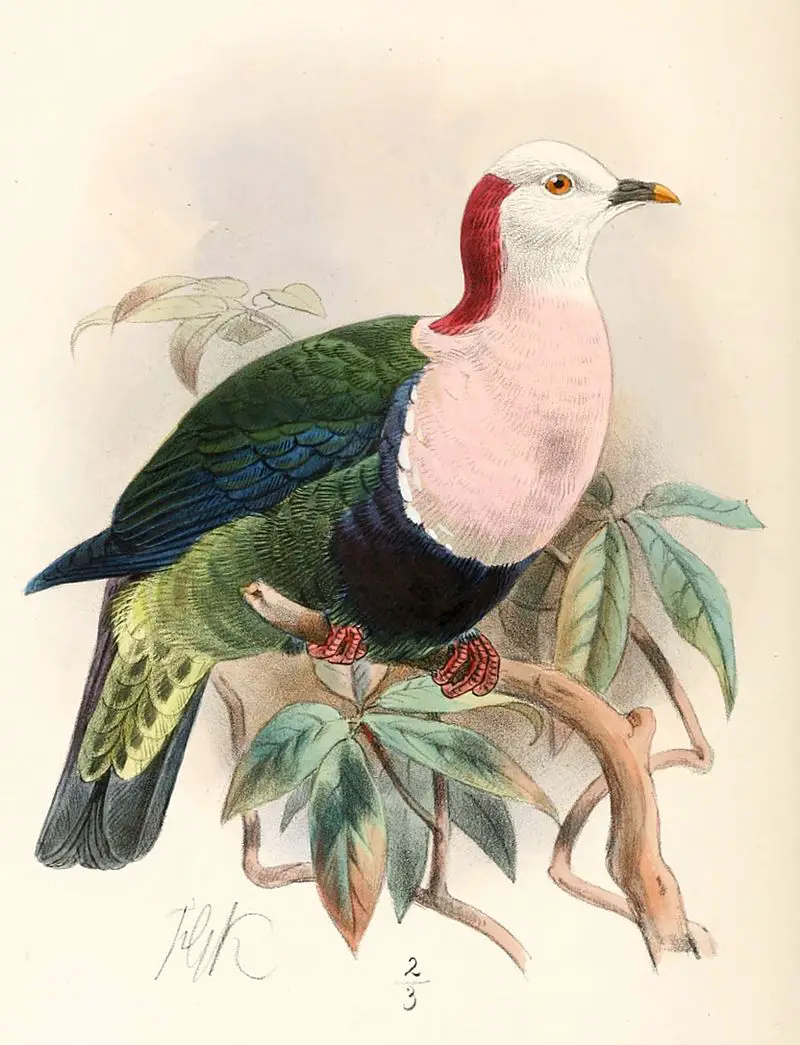
The Red-naped fruit dove is a bird species that belongs to the Columbidae family. It can only be found in Sumba and prefers to live in subtropical or tropical moist montane forests.
Unfortunately, this bird is endangered due to habitat loss. It is a beautiful bird with a cream-colored head, dark lower body, and a distinctive red patch on its nape. Young birds have yellow fringes on their upper feathers.
The Red-naped fruit dove is a large, striking fruit-dove that is easily identifiable. It’s important to conserve their habitat to ensure their survival in the wild.Scientific classification:
| Kingdom | Animalia |
| Phylum | Chordata |
| Class | Aves |
| Order | Columbiformes |
| Family | Columbidae |
| Genus | Ptilinopus |
| Species | P. dohertyi |
14. Apricot-Breasted Sunbird
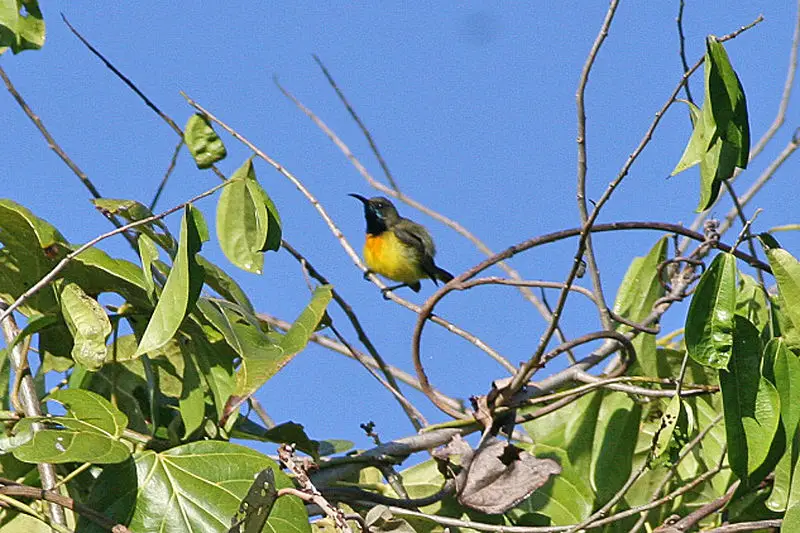
The Apricot-breasted sunbird is a bird species found only on the Indonesian island of Sumba. With its natural habitats including moist lowland forests and montane forests, this bird is known to be quite common in the region.
However, little information is known about its biology, particularly with regards to its breeding patterns.
The bird belongs to the family Nectariniidae and is characterized by its vibrant apricot-colored breast feathers.
Despite being studied by avian enthusiasts, the Apricot-breasted sunbird remains a mystery, and researchers are still unsure of many of its habits and preferences.
Nonetheless, the bird remains an integral part of the island’s ecosystem and a unique sight to behold for visitors that make the journey to Sumba.Scientific classification:
| Kingdom | Animalia |
| Phylum | Chordata |
| Class | Aves |
| Order | Passeriformes |
| Family | Nectariniidae |
| Genus | Cinnyris |
| Species | C. buettikoferi |
15. Least Boobook
The Least boobook, also called the little Sumba hawk-owl or little Sumba boobook, is a rare owl species belonging to the Strigidae family.
This owl is native to the small Indonesian island of Sumba and prefers to live in subtropical or tropical moist lowland forests.
Unfortunately, the owl’s habitat is in danger due to continuous deforestation, and it is listed as a threatened species.
Ornithologists discovered the Least boobook in the 1980s when they realized that there was an unknown species of owl on Sumba.
The discovery of this owl species highlights the importance of preserving the habitats of some of the world’s most beautiful but least known species.
The Least boobook’s distinct characteristics and natural camouflage help it blend perfectly into its forest habitat where it roosts in secluded trees during the day and hunts for small prey at night.Scientific classification:
| Kingdom | Animalia |
| Phylum | Chordata |
| Class | Aves |
| Order | Strigiformes |
| Family | Strigidae |
| Genus | Ninox |
| Species | N. sumbaensis |
16. Sumba Myzomela
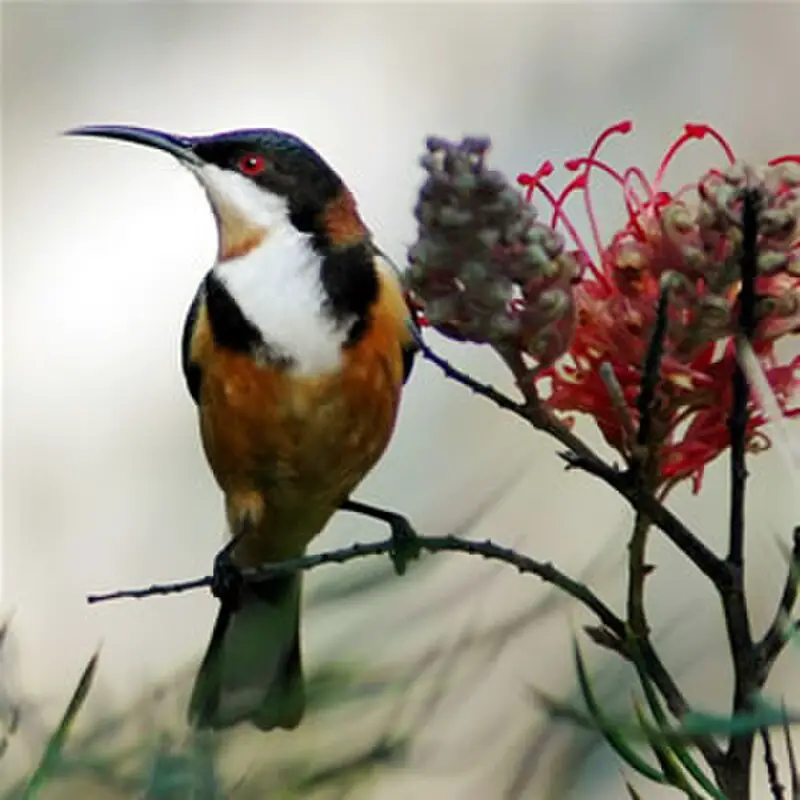
The Sumba myzomela is a unique species of bird that can only be found on Sumba Island in Indonesia. These birds prefer to live in forest environments that are primarily composed of deciduous trees.
Over time, they have adapted to withstand the varying weather conditions and challenges present in these forests. Their striking appearance includes a distinctive red plumage, which makes them easily recognizable.
Interestingly, even with their vibrant appearance, spotting these birds in their natural habitat can be quite challenging due to their swift movements and ability to blend in with their surroundings.
As a member of the Meliphagidae family, Sumba myzomelas engage in nectar feeding, which is necessary for their survival.
Although not much is known about these birds, their unique characteristics and environment-specific adaptations continue to fascinate and intrigue conservationists and bird enthusiasts alike.Scientific classification:
| Kingdom | Animalia |
| Phylum | Chordata |
| Class | Aves |
| Order | Passeriformes |
| Family | Meliphagidae |
| Genus | Myzomela |
| Species | M. dammermani |
17. Pale-Shouldered Cicadabird
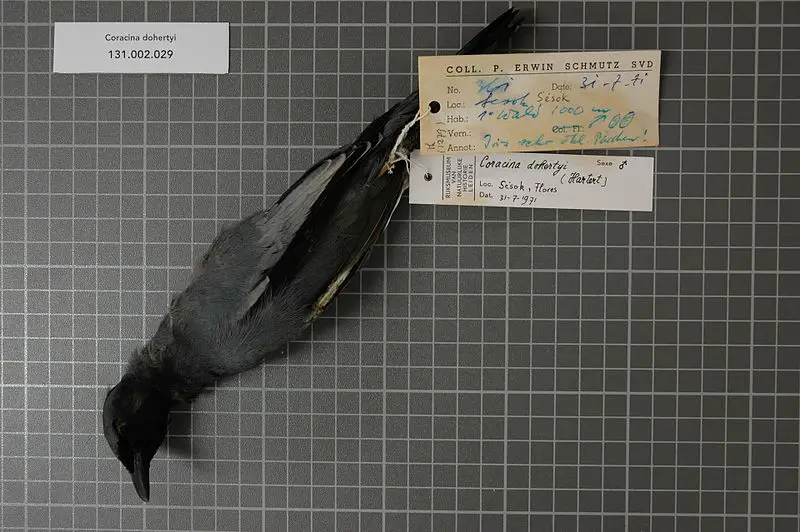
The Pale-shouldered cicadabird, also known as the Sumba cicadabird, is a type of bird that belongs to the Campephagidae family. This bird is found only in the Lesser Sunda Islands of Indonesia.
Pale-shouldered cicadabirds prefer subtropical or tropical moist lowland forests and subtropical or tropical moist montane forests habitats. The bird has pale shoulders and is endemic to the area in which it resides.
The bird is not known to have any special abilities, but it is a beautiful species that adds to the diversity of the area it inhabits. The Sumba cicadabird mostly feeds on insects, specifically cicadas, which make up the bulk of this bird’s diet.
Despite their small size, they play an essential role in maintaining the ecosystem of the region. Overall, pale-shouldered cicadabirds are fascinating creatures that continue to capture the attention of bird enthusiasts worldwide.Scientific classification:
| Kingdom | Animalia |
| Phylum | Chordata |
| Class | Aves |
| Order | Passeriformes |
| Family | Campephagidae |
| Genus | Edolisoma |
| Species | E. dohertyi |
18. Yellow-Ringed White-Eye
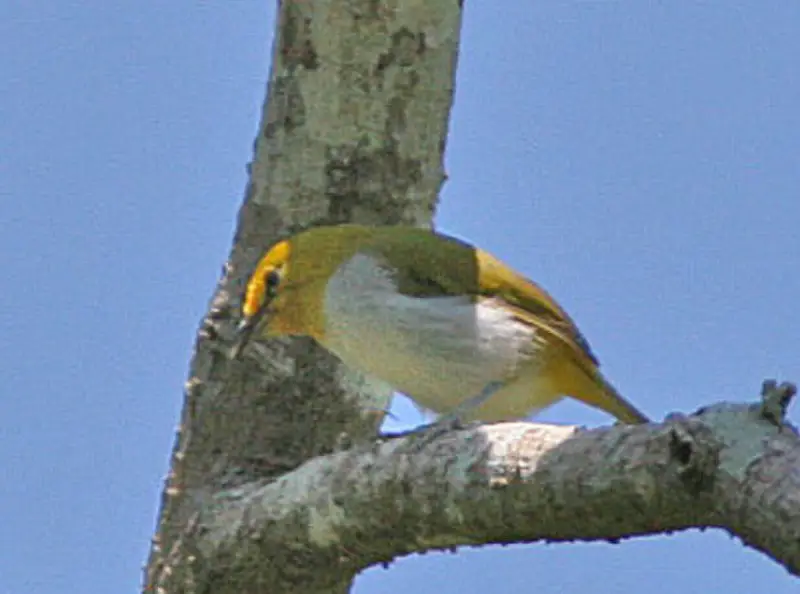
The yellow-ringed white-eye bird is a member of the Zosteropidae family and can be found in the Lesser Sunda Islands. This bird species thrives in subtropical or tropical moist lowland forests.
Small and active, the yellow-ringed white-eye has a distinctive yellow ring around its eyes. It is a social bird that can be found in flocks, feeding on nectar, fruit, and insects. Its diet also includes small invertebrates like caterpillars and mites.
The yellow-ringed white-eye bird’s call is a series of high-pitched notes, which can often be heard in its natural habitat.
Despite the bird’s natural beauty and interesting behaviors, there is limited information about its population size and conservation status.
Nevertheless, the yellow-ringed white-eye bird is an exceptional species worth protecting.Scientific classification:
| Kingdom | Animalia |
| Phylum | Chordata |
| Class | Aves |
| Order | Passeriformes |
| Family | Zosteropidae |
| Genus | Heleia |
| Species | H. wallacei |
19. Marigold Lorikeet
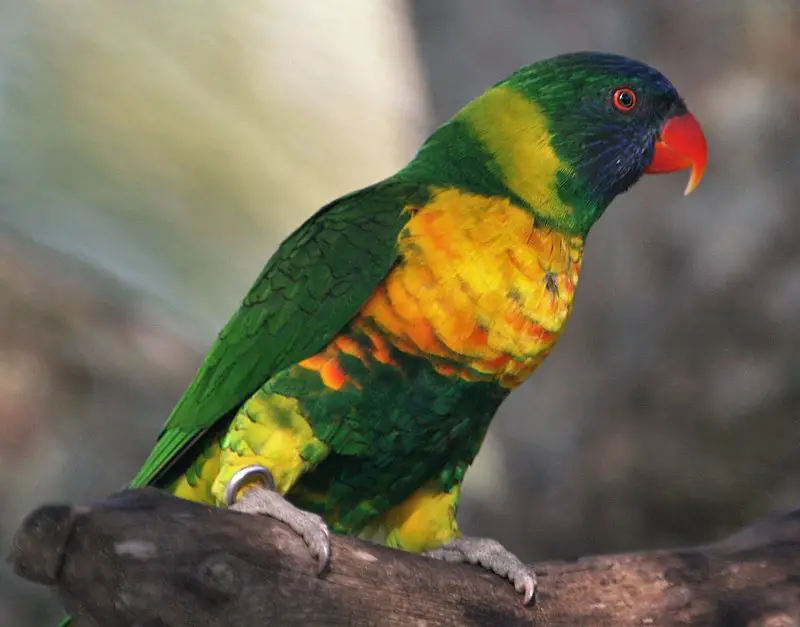
The Marigold lorikeet, also known as the Sumba lorikeet, is a parrot species found in south-east Asian islands such as Sumba, Rote, Wetar, Kisar and Timor.
It was initially considered a subspecies of the rainbow lorikeet but is now recognized as a distinct species. These small, colorful birds are known for their stunning combination of bright orange and yellow feathers.
They have a unique brush-like tongue that allows them to feed on nectar and pollen, and their beaks are specially adapted to crack and eat seeds.
Unfortunately, the Marigold lorikeet is considered a vulnerable species due to habitat loss and illegal trade.
Conservation efforts are underway to protect this beautiful bird and ensure its survival in the wild.Scientific classification:
| Kingdom | Animalia |
| Phylum | Chordata |
| Class | Aves |
| Order | Psittaciformes |
| Family | Psittaculidae |
| Genus | Trichoglossus |
| Species | T. capistratus |
20. Great-Billed Parrot
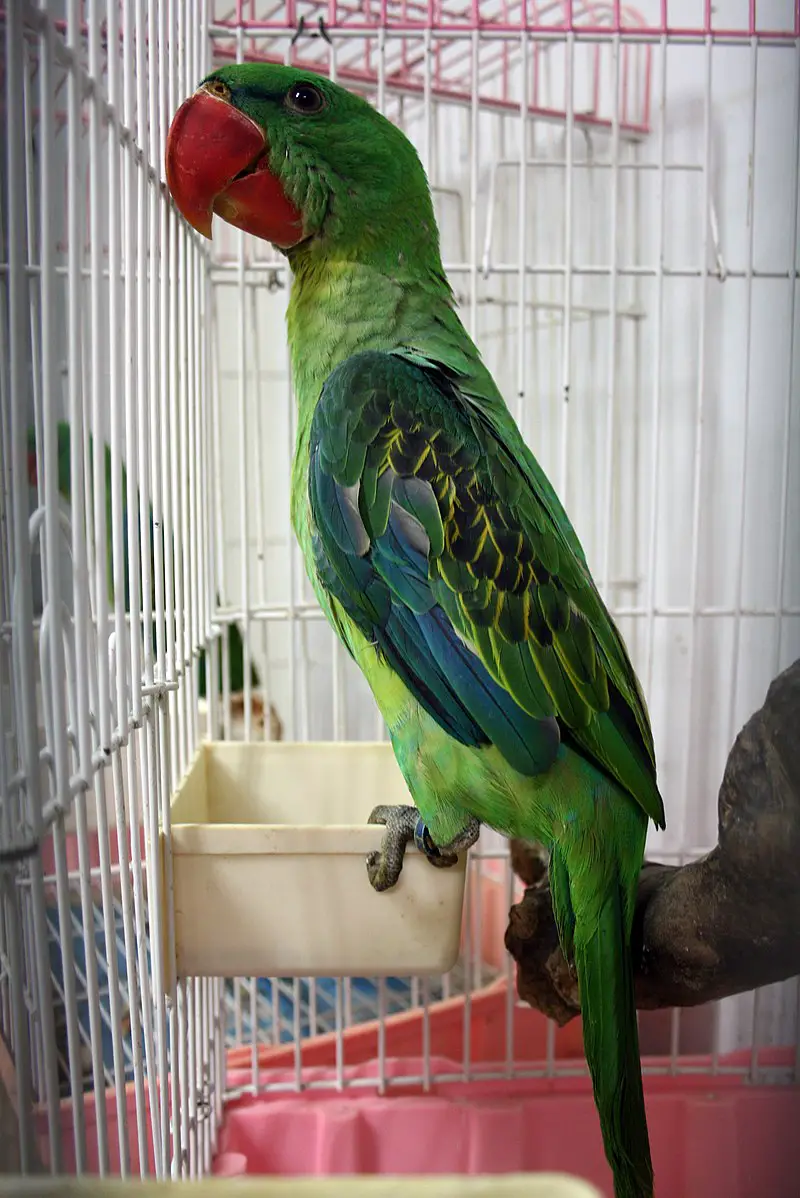
The Great-billed parrot, also known as the Moluccan parrot or Island parrot, is a medium-sized bird with a striking appearance. Its body is primarily green with blackish shoulders, an olive green back, and yellowish green underparts.
The most distinctive feature of the Great-billed parrot is its massive red bill, which gives the bird a regal appearance. The female of the species is typically smaller than the male, but both sexes have a cream iris and a pale blue rump.
Found mainly in Indonesia, this parrot species is known for its ability to mimic human speech and sounds. Overall, the Great-billed parrot is a beautiful and fascinating bird that is sure to capture the attention of any bird lover.Scientific classification:
| Kingdom | Animalia |
| Phylum | Chordata |
| Class | Aves |
| Order | Psittaciformes |
| Family | Psittaculidae |
| Genus | Tanygnathus |
| Species | T. megalorynchos |
21. Pale-Headed Munia
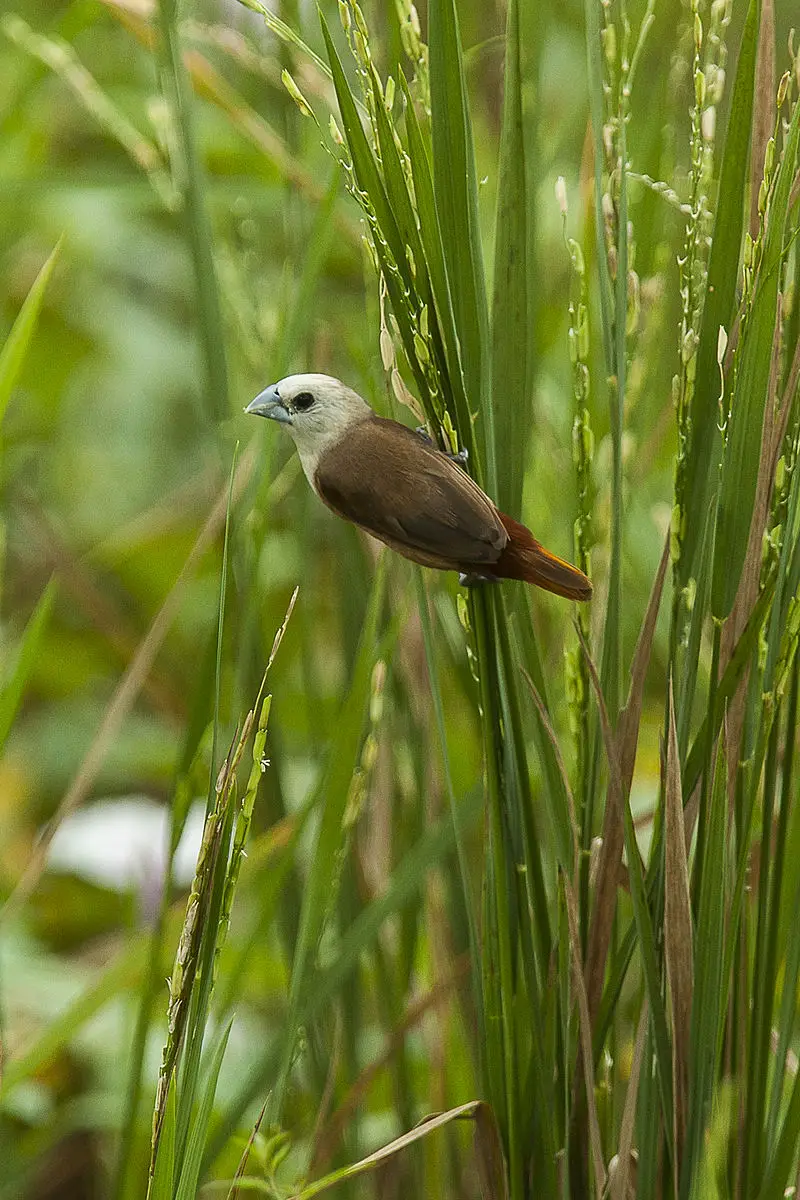
The Pale-headed munia is a finch species found in Indonesia, and its habitat includes artificial landscapes, shrublands, and grasslands. The bird has been evaluated as Least Concern in terms of its conservation status.
According to scientific research, it is believed that Estrildinae, the subfamily to which the Pale-headed munia belongs, might have originated in India and then dispersed later.Scientific classification:
| Kingdom | Animalia |
| Phylum | Chordata |
| Class | Aves |
| Order | Passeriformes |
| Family | Estrildidae |
| Genus | Lonchura |
| Species | L. pallida |
22. Red-Cheeked Parrot
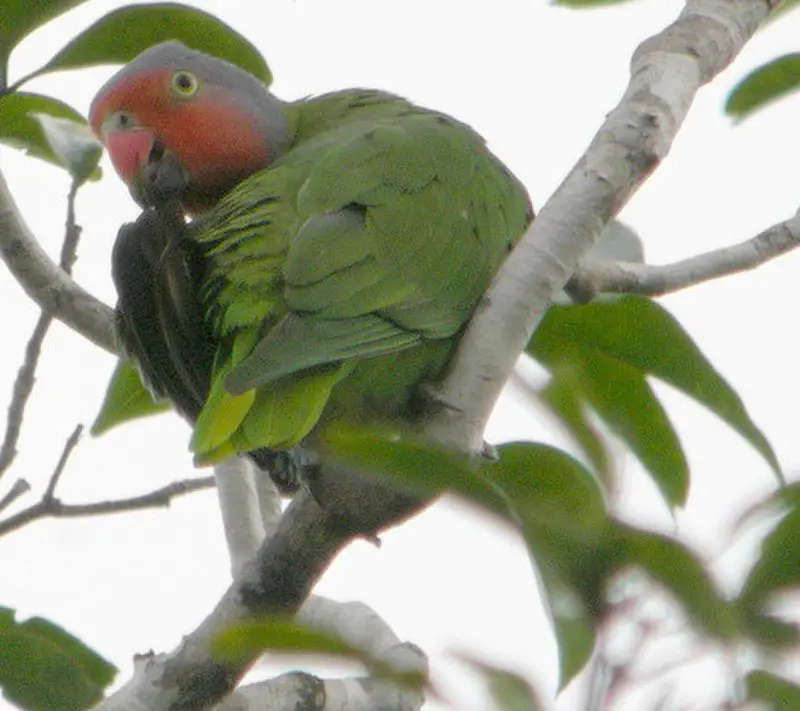
The Red-cheeked parrot, scientifically known as Geoffroyus geoffroyi, is a beautiful bird found in Indonesia, Papua New Guinea, and northern Australia. This parrot belongs to the family Psittaculidae and has 17 subspecies.
It has a short tail and a stocky body with green feathers. The male parrot has red cheeks and a mauve nape and top of the head, whereas the female lacks these features.
The Red-cheeked parrot is sexually dimorphic. This gorgeous bird species is a delightful pet, and some appreciate it for its beautiful colors and playful personality.Scientific classification:
| Kingdom | Animalia |
| Phylum | Chordata |
| Class | Aves |
| Order | Psittaciformes |
| Family | Psittaculidae |
| Genus | Geoffroyus |
| Species | G. geoffroyi |
23. Ashy-Bellied White-Eye
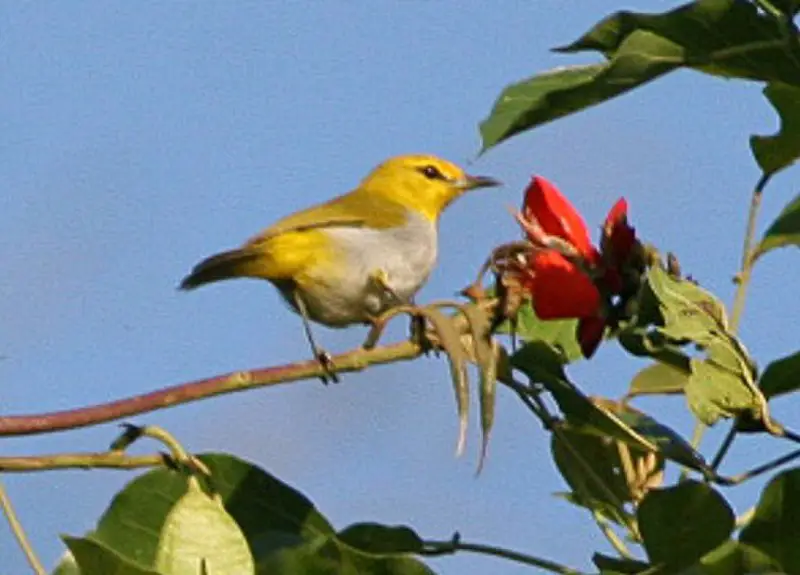
The Ashy-bellied white-eye, also known as the Pale white-eye, is a bird found in the Lesser Sunda Islands and northern Cape York Peninsula.
It is a member of the Zosteropidae family and is commonly found in subtropical or tropical moist lowland forests.
Despite its name, it is not to be confused with the Pale-bellied white-eye. This species is known for its ashy-grey belly and white eye-ring.
Its diet mainly consists of fruit and insects, and it is usually seen in groups or pairs. The Ashy-bellied white-eye is a small bird, reaching a length of only 11 centimeters.
Its beautiful plumage and charming nature make it a popular sight among birdwatchers and nature lovers.Scientific classification:
| Kingdom | Animalia |
| Phylum | Chordata |
| Class | Aves |
| Order | Passeriformes |
| Family | Zosteropidae |
| Genus | Zosterops |
| Species | Z. citrinella |